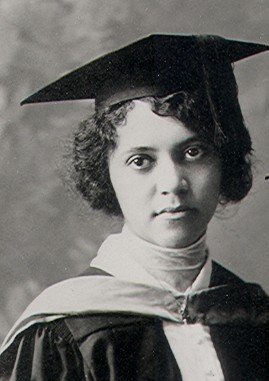Alice Augusta Ball, a pharmaceutical chemist, was born in Seattle, Washington in 1892 to Laura and James P. Ball Jr. Her grandfather was J.P. Ball, the well known daguerreotype photographer and her father was a promising lawyer. James P. Ball Sr. moved to Hawaii for health reasons in 1903 with his family and opened a studio. He died less than a year later and the family returned to Seattle in 1905.
Alice Ball entered the University of Washington and graduated with two degrees in pharmaceutical chemistry in 1912 and pharmacy in 1914. In the fall of 1914, she entered the College of Hawaii (later the University of Hawaii) as a graduate student in chemistry. On June 1, 1915, she was the first African American and the first woman to graduate with a Master of Science degree in chemistry from the University of Hawaii. In the 1914-1915 academic year she also became the first woman to teach chemistry at the institution.
Ball’s major adviser assigned her a research project involving the effect of chaulmooga oil on patients with Hansen disease. Her research developed a successful treatment for those suffering from the disease. At the time of her research Ball became ill. She worked under extreme pressure to produce injectable chaulmooga oil and, according to some observers, became exhausted in the process. Ball returned to Seattle and died at the age of 24 on December 31, 1916. According to her obituary, she suffered injuries from inhaling chlorine gas during a class demonstration in Honolulu.
Arthur Lyman Dean, the chairman of the Chemistry Department at the University of Hawaii, who later became the second president of the University, continued refining the research work of Ball, treating many patients successfully at Kalaupapa, a special hospital for Hansen disease patients. The “Dean Method” continued to be the most effective method of treatment until the 1940s and as late as 1999 one medical journal indicated the “Dean Method” was still being used to treat Hansen disease patients in remote areas.
During her brief lifetime Ball never received the acknowledgement from the medical world for her groundbreaking work in the cure of Hansen disease. After her death the chairman of the University of Hawaii Chemistry Department received recognition. Over time, however, researchers began to learn of Ball’s crucial contribution. In 2000, the University of Hawaii acknowledged Alice A. Ball as one of its most distinguished graduates.

